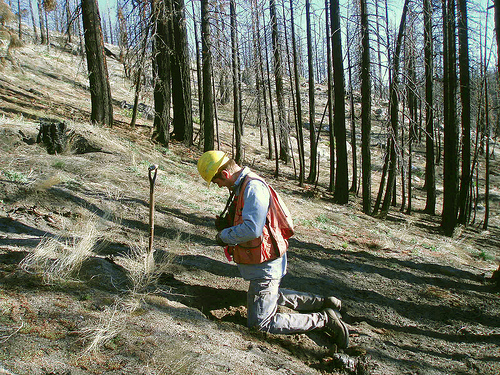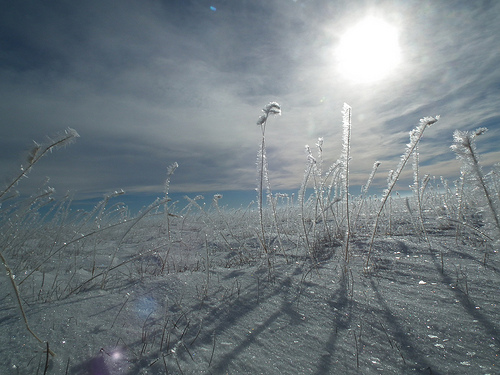A couple of nice quality inspection service photos I discovered:
Good quality inspection on the Plumas NF

Image by USFS Area five
Top quality inspection of a seedling planted on the Plumas National Forest of the Antelope Complicated Project, taken 1/01/2005.
Frosty Blue Grama Grass with Winter Storm Atlas Conservation Recovery Perform

Image by USDA NRCS South Dakota
Field operate in the cold climate can often be uncomfortable for farmers and ranchers and personnel of the USDA All-natural Resources Conservation Service (NRCS). On January 9, 2014, the climate cooperated somewhat (up to 15 degrees above zero) while NRCS workers met with some ranchers to inspect their completed burial pits. The burial pits are component of the conservation recovery efforts for producers by way of the NRCS’ Environmental Top quality Incentives Plan (EQIP).
By way of EQIP, NRCS was capable to help farm and ranch family members victims of the Winter Storm Atlas of early October 2013 with technical help and over million financial help for hundreds of applications that helped with burying or disposal of livestock or repairing destroyed conservation practices.
Fall function has moved into the deep winter. NRCS continues to function with farmers and ranchers as they recover from the devastating storm and comprehensive their conservation practices.
In this photo, the heavy fog of the past handful of days had designed a frost on the grass stems. Contrary to the topic that NRCS and the ranchers have been discussing that day, the scene was really gorgeous on the snow-covered plains northwest of Union Center, SD.
Submitted by Tanse Herrmann, District Conservationist, USDA NRCS, Sturgis, SD.
NRCS Assisting Farmers and Ranchers Recover from Winter Storm Atlas
In spite of challenging climate, conservationists with USDA’s All-natural Sources Conservation Service in South Dakota are functioning diligently – and frequently in sub-zero temperatures and snow-covered fields and pastures – to help ranchers recover soon after Winter Storm Atlas. Recovery operate started immediately when the federal government reopened Oct. 17 and nevertheless continues.
The October 2013 surprise blizzard affected roughly 28,000 square miles of western South Dakota, an region the size of West Virginia, killing tens of thousands of cattle, sheep, horses and some wildlife.
Community farm and ranch family members gatherings had been organized to attain out outlining social, economic and environmental assistance. Led by the South Dakota Stockgrower’s Association, South Dakota Cattlemen’s Association and South Dakota Sheepgrower’s Association.
NRCS has been helping farm and ranch family members victims of the storm with technical assistance and a lot more than million in financial assistance for hundreds of applications that helped with burying or disposal of livestock or repairing destroyed conservation practices.
In early January 2014, in the Sturgis, S.D. area, 15-degree climate permitted inspection and certification of burial pits to make certain they had been constructed in environmentally protected locations. The animal mortality facilities are portion of the conservation recovery efforts for producers via the NRCS’ Environmental Good quality Incentives System (EQIP).
Throughout western South Dakota, Atlas’ 3 days of cold rain, snow and effective, icy winds pushed livestock into waterways and into and by way of fences. Some livestock had been even discovered more than 20 miles away.
Ranchers and NRCS worked to swiftly dispose of livestock carcasses to stop contamination of water bodies. The secondary, and really actual benefit, of removing dead animals from the landscape is for the individuals – the families who reside off the land – to commence healing. The social effects of this catastrophic loss are deep and will take years to heal.
Winter field work is usually uncomfortable, but with the right equipment and clothing, we venture out realizing our perform is integral to assisting folks support the land in a meaningful way.
Additionally, EQIP is helping replace blizzard-broken conservation practices. We’re renovating windbreaks and shelterbelts to reinforce livestock and headquarters shelter components of ranching operations and give protection from wind in future storms.
In some situations, a fabricated windbreak to replace the living shelterbelt was the greatest answer to defend animals from harsh weather, but also protect environmentally sensitive regions like waterways. We also worked with some ranchers to replace fencing needed for rotational grazing systems and reconstruct of ponds that had been breached or continue to be threatened by higher waters simply because of 3 feet of snowfall.
NRCS field employees can not repair the heartache and emotional loss they see in the eyes of ranch households, but we are responding with a caring professionalism that is appreciated, and even returned, although the circumstances have several households under considerable stress.
The shared goal of all parties is defending surface water good quality, improving animal health and moving forward. And our operate with ranchers to rebuild conservation practices prepares ranchers for a productive spring and next year’s winter.